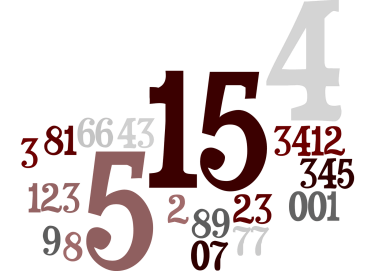(This essay was originally published on SHAPE America’s member Exchange [June, 2015] and is reprinted with permission.)
Some time ago, Kevin Costner starred in a movie called “The Guardian.” He played Ben Randall a legendary Coast Guard rescue swimmer admired for his success saving lives. A new recruit, determined to better Randall’s achievements, repeatedly asks him for his “number.” How many lives has he saved? Randall avoids responding, until close to the movie’s end when, pressed again for his number, he responds, “Twenty-two.” The rookie life saver is surprised because it is a rather unimpressive number for a legend. But then Randall explains, “Twenty-two is the number of lives I failed to save!”

Jim Perry, familiar to many of you as one of SHAPE America’s longtime sport advocates, reminded me of this story after my recent presentation at the Southwest District/Utah AHPERD conference in Park City. He’d listened to me talk about “50 Million Strong by 2029,” SHAPE America’s goal to get all kids entering preschool this fall physically active and healthy in 14 years (or sooner). At the end of the session, audience members began personalizing the challenge. They described their unique piece in the puzzle. As K-12 health and physical educators they were responsible for two, three, or four hundred kids. The numbers varied by level but the point was clear. The way to reach 50 million is for each of us to focus on what we can do. None of us can change the behaviors of millions, but each one of us can take responsibility for changing the physical activity and health habits of all of the students we serve in our schools. After listening to this exchange, it was Jim who in his usual quiet and deliberative manner suggested that each of us should focus on answering the question, “What’s my number?”
I shared this thought at the June Leadership Development Conference in Greenville, SC. Attending were the executive directors and presidents-elect from almost every state. Each one faces the question of PURPOSE. What are they going to do to guide their state’s future when they assume leadership over the next few months? It’s tempting to suggest some new, novel project: something different from the person before. Perhaps a catchy slogan theme for the next conference? An inspirational guest speaker? A new strategy for a membership drive? Although reluctant to appear curmudgeonly (yes, that’s a real word), at this time in our professional history I’d suggest there’s a good argument for sameness: A clearly identified single teaching target rather than something that is constantly changing and moving. And that’s the beauty of “50 Million Strong by 2029.” It’s crystal clear where we are going and when we are going to get there. Instead of trying to be different, how about we all agree to focus our creativity and imagination on achieving this one goal?
Getting every school-aged child in America physically active and healthy in 14 years is surely hard enough. We have to focus to succeed. It’s time to quit being distracted. To stop doing things that don’t get our students physically active and healthy. I know it’s going to be a tough transition. School administrators urge us to help improve student test scores but don’t insist on other subject teachers supporting our mission. And when we do it, what’s the result of our efforts? Is it increasing respect and support for health and physical educators? I think not. Almost certainly it’s a distraction from doing what we do best: Preparing kids with the skills, knowledge, and desire to be physically active and healthy, which as the evidence increasingly shows helps students do better in school. Perhaps the real truth is that school administrators too often try to direct our work because they don’t understand our purpose? And sadly, our willingness to add non-physical activity and health promoting instruction into our curriculums suggests we are also unclear on purpose.
If we seize the opportunity, “50 Million Strong by 2029” can be a pivotal moment in our history: the tipping point of our professional future. We must make fall 2015 the start of a change movement in the lives of America’s school-aged children. Imagine if all 200,000 K-12 health and physical educators committed to focusing on achieving the same goal. Differences between “good” and “bad” programs and teachers would quickly become self-evident. There’d be no hiding place for teaching that does us a disservice. Principals, superintendents, and school boards would see the value of supporting quality health and physical programs and demand results. The tiresome lament that we get “no respect” would stop being a professional mantra. A dream? It doesn’t have to be if each one of us – beginning with you presently reading this column – commits to change. That’s what the SHAPE America Board of Directors and staff are doing, but we need you and your support to make “50 Million Strong by 2029” a reality. And a good starting place is to ask yourself the question, “What’s my number?”
